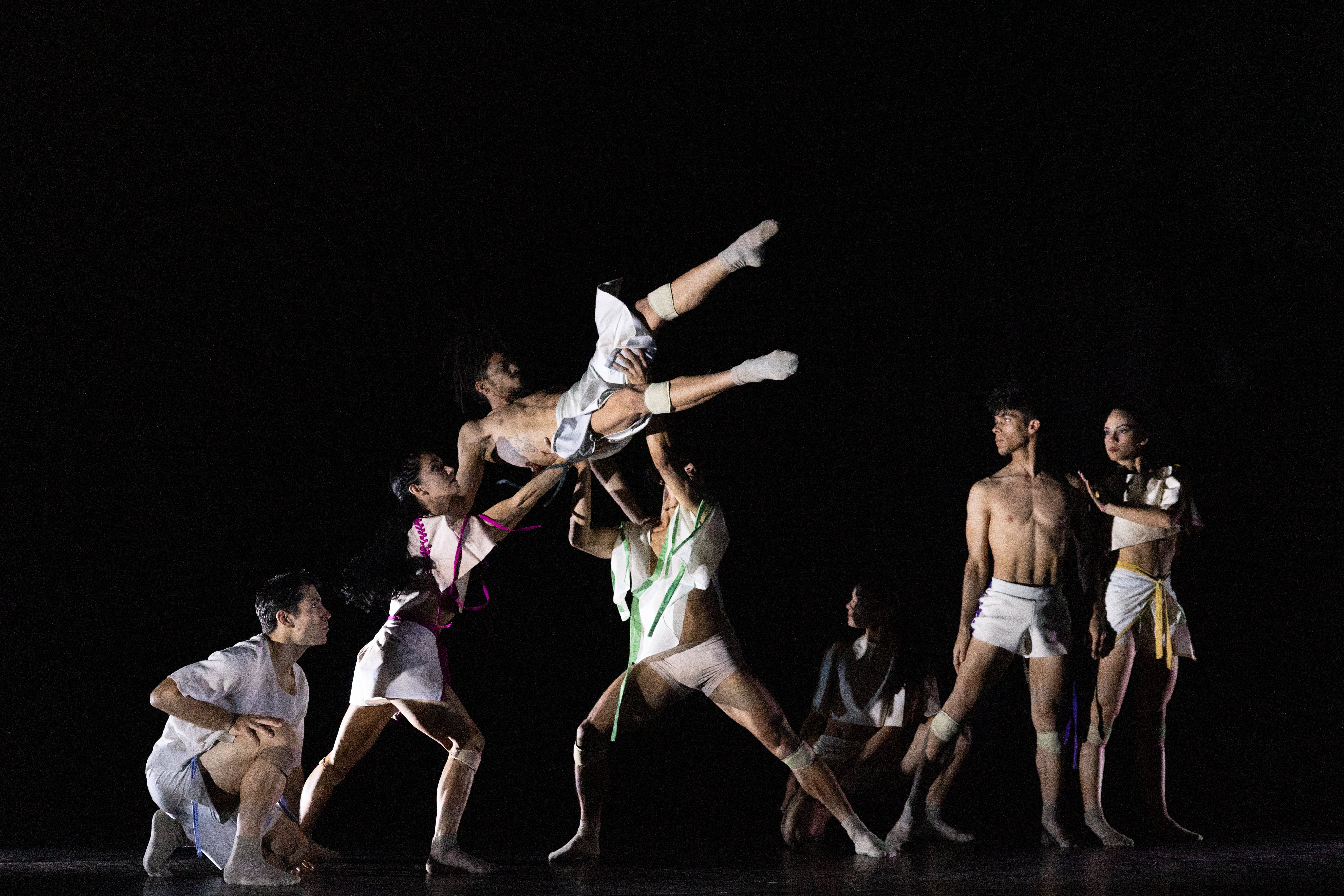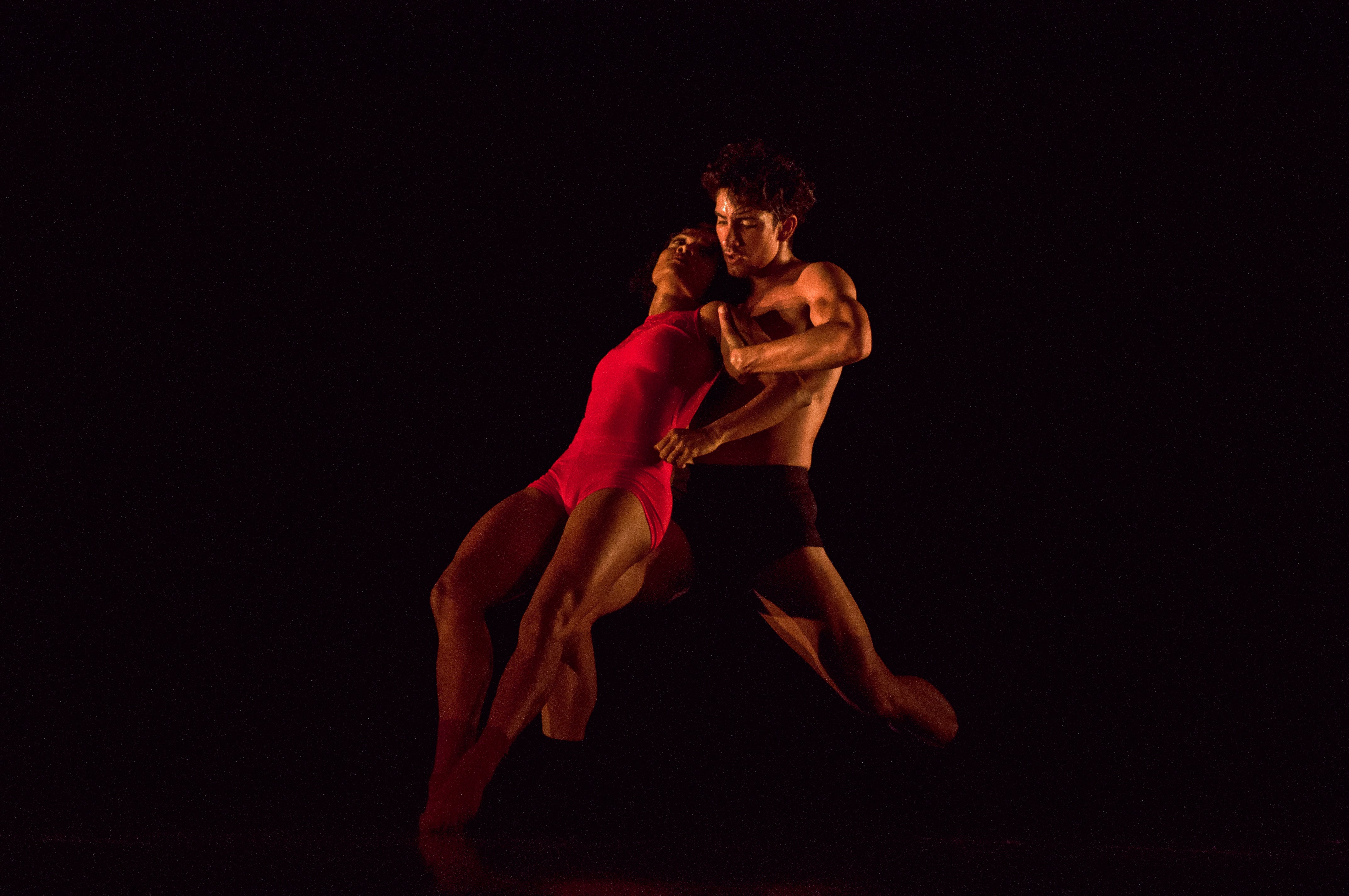Spectrum, Acosta Danza review: A rich showcase for Carlos Acosta’s company
Some works stand out more than others in this varied programme

When ballet star Carlos Acosta founded Acosta Danza in 2015, he wanted to show off the richness of Cuban dance talent. And Spectrum certainly does that. His dancers have both classical and contemporary training, throwing themselves into a range of styles. Across a varied programme, they show assertive performance and lush physicality.
In Performance, choreographer Micaela Taylor piles up contrasts. The recorded score goes from Andy Stott’s electronic dance music to a snatch of Debussy. A voiceover describes walking as a performance, while the seven dancers switch from one mode to the next.
They pose like Egyptian wall paintings (feet sideways, torso forwards), or stand in a line with arms fanned out at different angles. Two men rearrange each other, like stop-motion puppeteers. Breaking into whole group dances, they’ll lope in circles, or scrunch together in a huddle. Throughout, the dancers are very in the moment, bright and confident.

Created in 2009, Sidi Larbi Cherkaoui’s Faun is a sumptuous reimagining of L’Après-midi d’un faune, moved from Greek antiquity to a glowing woodland. The two dancers are absorbed in their own and each other’s bodies, both sensuous and entirely unselfconscious. Alejandro Silva’s undulates up off the ground, all liquid moves, to Debussy’s score. When Zeleidy Crespo makes her entrance, the music shifts to Nitin Sawhney’s electronic lines. Cherkaoui ties them in knots, but it’s never flashy: they slide in and out of poses like cats stretching in the sunlight. It’s a fine revival of a memorable dance.
The new Portal, by Juanjo Arqués, is less focused. It’s an episodic piece, losing momentum as the dancers leap from one grouping to the next. Nosotros, by Beatriz García and Raúl Reinoso, traces changing moods within a relationship. With vivid chemistry, Laura Rodriguez and Mario Sergio Elias lean into one another or break away, getting under each other’s skins.
Goyo Montero’s Aldredro no hay nada has a cabaret theatricality, with bowler hats for the dancers and the choreographer’s own stark lighting design. We glimpse couples dancing together, women’s bare arms around their partners’ suited backs. Soloists strut in a stripe of light, while the rest of the cast pose at the footlights. I wish subtitles or translations had been provided for the poems by Joaquin Sabina, spoken on the soundtrack: an English-speaking audience is likely to miss layers of meaning, though the dancers remain alert and punchy.



Join our commenting forum
Join thought-provoking conversations, follow other Independent readers and see their replies
Comments